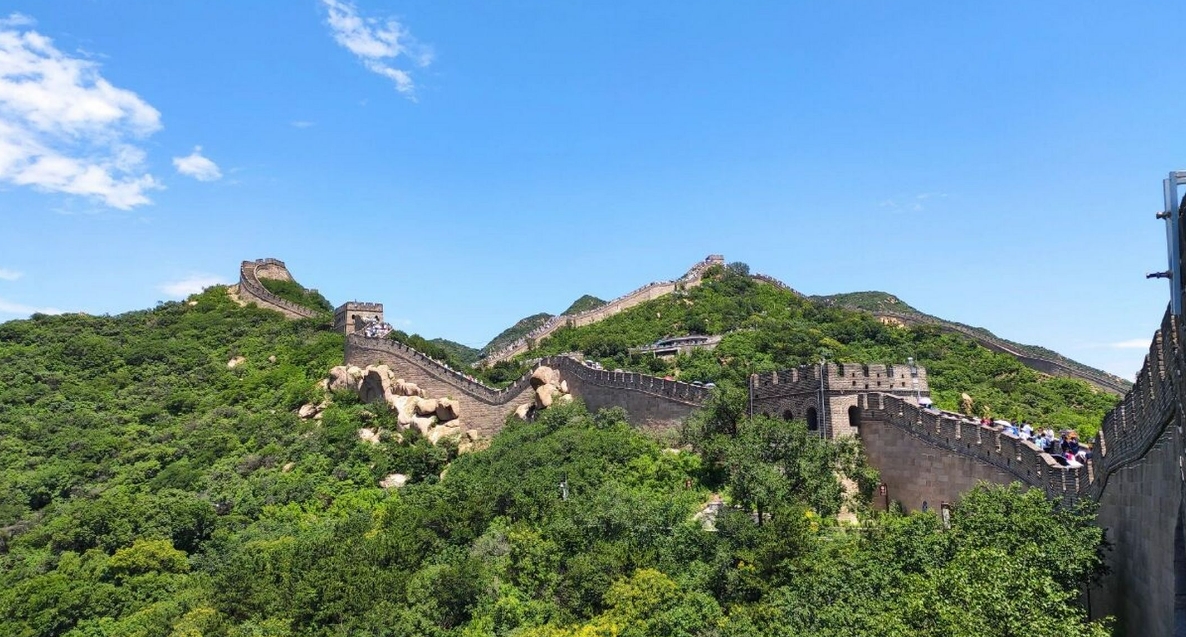
Badaling Great Wall: A Ming Dynasty Guardian Protecting the Imperial Capital
Standing majestically in the northwest of Beijing, the Badaling Great Wall is renowned worldwide for its imposing grandeur and breathtaking scenery. Its existence is not accidental but rooted in the Ming Dynasty centuries ago, a testament to a turbulent era of defending the homeland.
Ming Dynasty Construction: A Strategic Stronghold, Safeguarding the Capital Region
The construction of the Badaling Great Wall commenced in 1505, during the Hongzhi reign of the Ming Dynasty, under the supervision of Xu Jing, a descendant of the renowned general Xu Da. The choice of Badaling as the construction site was far from arbitrary but driven by critical strategic considerations.
- The Northern Gateway of Juyongguan Pass: Situated north of Juyongguan Pass, Badaling served as a crucial barrier for this strategic location. As one of the "Nine Passes of China," Juyongguan held immense military significance throughout history, controlling the crucial passage into Beijing. Constructing the Great Wall at Badaling effectively reinforced the defense capabilities of Juyongguan, making it even more impenetrable.
- Natural Terrain Advantage: Badaling boasts a naturally advantageous terrain with surrounding mountains, creating a natural defensive barrier. The Great Wall, built along the mountain ridges, winds and zigzags, leveraging the terrain to establish a multi-layered defense system that was extremely difficult to breach, effectively deterring enemy invasions.
- A Solid Defense Line for the Capital: The construction of the Badaling Great Wall extended Beijing's defense line northward by dozens of kilometers, establishing an unbreakable line of defense that effectively safeguarded the Ming Dynasty capital.
Architectural Characteristics of the Ming Great Wall
The Badaling Great Wall stands out not only for its strategic location but also for its architectural embodiment of the Ming Dynasty's advanced construction techniques and military ingenuity:
- Solid Walls and Majestic Passes: Constructed entirely of massive stone blocks and bricks, the Badaling Great Wall boasts tall and sturdy walls and awe-inspiring passes, showcasing the advanced construction techniques of the time.
- Sophisticated Defense System: Beyond its imposing walls, the Badaling section features a comprehensive defense system with watchtowers, beacon towers, and battle platforms, forming a well-rounded defense network capable of effectively repelling enemy attacks.
- A Perfect Fusion of Military Function and Artistic Beauty: While prioritizing defensive functionality, the Badaling Great Wall also exhibits aesthetic considerations. The undulating walls, blending seamlessly with the surrounding mountains, create a magnificent landscape painting, a testament to the wisdom and creativity of the ancient Chinese people.
Conclusion
Having weathered centuries of wind and rain, the Badaling Great Wall stands strong and proud. It is not merely a symbol of the Chinese nation but a treasured World Heritage Site. It stands as a witness to the passage of history and embodies the indomitable spirit and wisdom of the Chinese people.
Q&A:
Q: Why was the Badaling Great Wall built?
A: The Badaling Great Wall was built during the Ming Dynasty to protect the capital city of Beijing from invaders. Its strategic location and sophisticated defense system made it a formidable barrier against enemy attacks.
Q: What are some of the unique architectural features of the Badaling Great Wall?
A: The Badaling Great Wall is known for its massive stone and brick construction, its imposing watchtowers and passes, and its strategic use of the natural terrain. It embodies a perfect blend of military functionality and artistic beauty.
Q: Why is the Badaling Great Wall important today?
A: Today, the Badaling Great Wall is a UNESCO World Heritage Site and a powerful symbol of Chinese history and culture. It attracts millions of visitors every year who come to marvel at its grandeur and learn about its rich history.